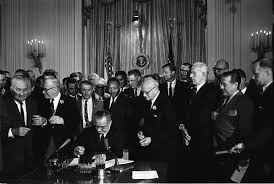Many civil rights leaders were trying to help fix the problems in Birmingham. One of those leaders was Dr. Martin Luther King Jr. The activists worked to plan protests and events. The people who went to the protests often got arrested. The police in Birmingham did not allow the protests to happen without trouble.
Civil rights leaders and community members went to the 16th Street Baptist Church to plan meetings. It became well known as a place where the activists met.
SUNDAY MORNING
Until Sunday, September 15th, 1963, no one was killed in the bombings. On that day, the 16th Street Baptist Church became the site of another explosion.At 10:22 a.m., the teenage Sunday School Secretary got a phone call. The person delivered an ominous message, just saying "Three minutes." Less than one minute later, the bomb went off. 15 sticks of dynamite had been hidden under the church steps.
The explosion hit a back room in the church. Inside, five young girls were getting ready to sing in the church choir. Witnesses said the bomb caused the girls to fly through the air "like rag dolls." The blast also tore a seven-foot wide hole in the wall. In fact, the explosion was so powerful that a man who was driving by was blown out of his car.
The bomb killed four of the girls: Addie Mae Collins, 14; Carol Denise McNair, 11; Carole Robertson, 14; and Cynthia Wesley, 14. The fifth girl, Sara Collins, was badly injured. Pieces of glass had flown into her eye and blinded her. Beyond the five girls, the explosion injured 19 other people.
Black people in Birmingham reacted quickly to the bombing. Many people rushed to the church to help look for bodies in the church's ruins. Hundreds of others stormed the city. They burned buildings that white people owned and protested violently. It took 300 extra state policemen to help Birmingham's police get the city back under control.
PUBLIC SUPPORT
The funerals for the four girls got a lot of attention around the U.S. Thousands of people, including more than 800 clergymen of all races, attended. Martin Luther King was also there and spoke at the event. He encouraged people to keep working towards civil rights. He hoped that if they worked hard enough crimes like the bombing would no longer happen.INVESTIGATIONS
The investigation of the crime was done poorly and took a long time. At first, the state of Alabama offered a $52,000 reward for the bomber's arrest. Twenty-five FBI agents came to work on the case. Part of what made the investigation hard was the lack of evidence. A lot had been destroyed with the church. Finally the FBI discovered that the bombers were four members of the Ku Klux Klan. Their names were Thoman Edwin Blanton, Jr., Herman Frank Cash, Robert Edward Chambliss, and Bobby Frank Cherry. Unfortunately the case was closed in 1968. The men were never arrested. Problems within the FBI's administration were to blame.LATE ARRESTS
There was a new Attorney General in Alabama in 1971. He started looking into the case again, digging up old evidence. His efforts helped convict the group's leader. Robert Chambliss was sent to jail in 1977.The rest of the men were free until 2000. Then the FBI reopened the case. Bobby Cherry had died, but Thomas Blanton and Herman Cash were convicted in 2002.





